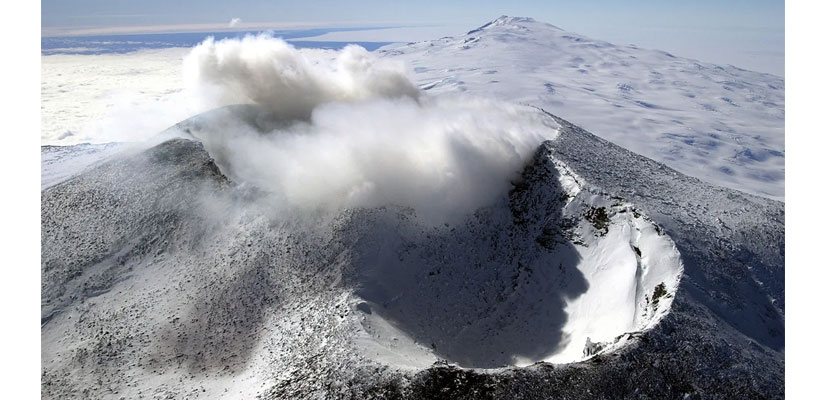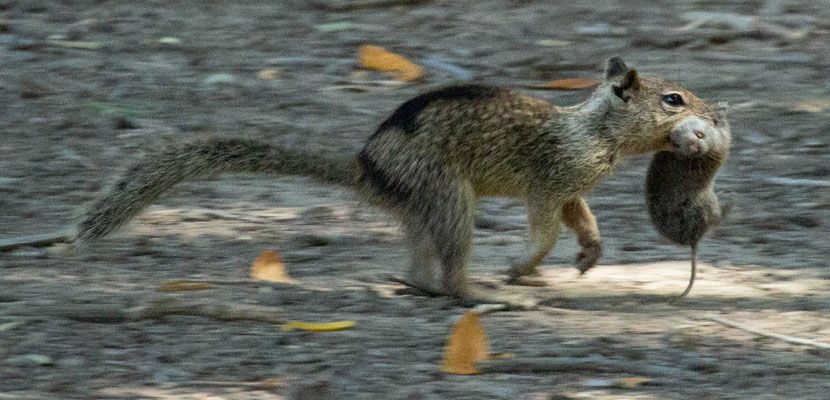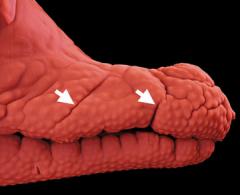
This Article From Issue
March-April 2025
Volume 113, Number 2
Page 78
In this roundup, associate editor Nicholas Gerbis summarizes notable recent developments in scientific research, selected from reports compiled in the free electronic newsletter Sigma Xi SmartBrief.
Waking Antarctic Volcanoes
The loss of surface ice in the West Antarctic Ice Sheet, accelerated by climate change, could cause more volcanic eruptions in the region by speeding ice melting and triggering a melt–eruption feedback loop, according to a team led by researchers at Brown University. The computer simulation data suggest the ice losses could further raise sea levels, perturb climates, and threaten ecosystems. The ice sheet sits atop one of the world’s largest volcanic provinces, which comprises more than 100 potentially active eruption areas both above and beneath the ice. As melt and runoff decrease the ice’s compressive weight, the Earth’s crust will rebound like a ragged foam mattress, sealing old fractures, opening new ones, and allowing magma to flow into shallower chambers. Declining pressure will also let more of the mantle partially melt (rocks under reduced pressure require less heat to change state) and add gas pressure to magma chambers from released water and carbon dioxide, potentially triggering further, more explosive eruptions over the coming centuries.

Josh Landis, U.S. Arctic Program, Public Domain
Coonin, A. N., C. Huber, J. Troch, M. Townsend, K. Scholz, and B. S. Singer. 2024. Magma chamber response to ice unloading: Applications to volcanism in the West Antarctic Rift System. Geochemistry, Geophysics, Geosystems 25:e2024GC011743.
Thinking at 10 Bits per Second
Based on tests involving speed memorization, speech, and the game StarCraft, scientists at the California Institute of Technology have clocked the human brain’s processing speed at a measly 10 bits per second. That suggests that neuro-prostheses might perform motor functions with less input than once believed, but it also renders brain-to-computer interfaces moot—at least within the study’s information theory framework, which depends strongly on how actions, decisions, and “bits” are defined and measured. While it is perhaps mortifying to learn that we perceive, act, and imagine at early telegraph transmission rates, it is also baffling because the peripheral nervous system (which feeds our perceptions and informs our decisions) absorbs environmental data at closer to 6G speeds. The discrepancy between these “inner” and “outer” brains raises other questions, such as why we think and act serially, like a cook following a recipe step-by-step, while our senses process data in parallel, like a kitchen crew handling a full restaurant’s meals and prep steps in tandem; how the dribble of human thought can interface with the torrent of sensory flow; and why we evolved to use the same neural architecture for such disparate data rates. The authors note the limits of their measurement methods, but add that humans might have evolved such low–bit-rate thinking simply because it was sufficient or advantageous to survival.
Zheng, J., and M. Meister. 2024. The unbearable slowness of being: Why do we live at 10 bits/s? Neuron 113:192–204.
Squirrels that Hunt

Sonja Wild/UC Davis
In the first clear evidence of squirrels preying on vertebrates, scientists have documented 74 instances of California ground squirrels (Otospermophilus beecheyi) hunting, killing, eating, and competing over California voles (Microtus c. californicus). Though squirrels generally eat seeds, nuts, and fruits, they are behaviorally flexible and sometimes expand their diets to include insects or even eggs or hatchlings. The authors, led by researchers at University of Wisconsin–Eau Claire, believe the predation was triggered by a 2024 spike in the local vole population. Squirrels are adapted to capitalize on pulses (sudden appearances of large amounts of food), though these surpluses typically comprise acorns or tree nuts, not hamster-like mammals. Squirrels are highly social, but the hunters worked alone and, though the scientists saw some social tolerance during feeding, they also noted unusual aggression and dominance displays around the killed voles. It’s unclear how kinship or family ties affect such conduct, or whether hunting behaviors, which occur across ages and sexes, arise from social learning or genetic predisposition. Either way, predation could affect population and community interactions and evolutionary fitness, as well as disease dynamics, among two reservoir species of the plague-causing bacterium Yersinia pestis.
Smith, J. E., et al. 2025. Vole hunting: Novel predatory and carnivorous behavior by California ground squirrels. Journal of Ethology 43:3–12.
Dim, Strange Nova
A team led by researchers at the University of Warsaw has found new space objects, dubbed “millinovae,” that send out nova-like bursts of low-energy x-rays without ejecting huge masses of matter. Typically, a nova occurs on the surface of a white dwarf (a dense, compact, and burned-out star remnant) that shares a binary system with a main-sequence star or a red giant. Gravity causes matter from the companion star to swirl inward and build up on the dwarf’s surface, ultimately triggering an explosion that releases the telltale x-rays and the equivalent of up to one-tenth of the Earth’s mass in matter. But ASASSN-16oh, the first millinova found, showed no mass ejection and took months to fully brighten, compared to the hours or days typical of a nova. The lack of matter expelled by millinovae could mean more mass remains to accumulate on the white dwarf’s surface; if so, enough could eventually build up to cause a Type Ia supernova. So far, the team has found 28 other millinovae in data from the Optical Gravitational Lensing Experiment (OGLE) survey. They lie in the direction of the Magellanic Clouds, two galaxies that are among the Milky Way’s closest neighbors.
Mróz, P., et al. 2024. Millinovae: A new class of transient supersoft x-ray sources without a classical nova eruption. Astrophysical Journal Letters 977:L37.

American Scientist Comments and Discussion
To discuss our articles or comment on them, please share them and tag American Scientist on social media platforms. Here are links to our profiles on Twitter, Facebook, and LinkedIn.
If we re-share your post, we will moderate comments/discussion following our comments policy.